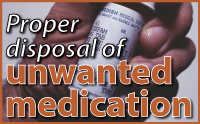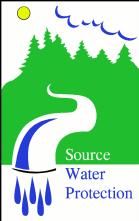The 1996 amendments to the federal Safe Drinking Water Act provide for a greater focus on pollution prevention to protect surface water and groundwater from pollution.
to protect surface water and groundwater from pollution.
The 1996 amendments required DHEC to provide Source Water Assessment Reports (SWAR) to federally defined public-water-supply systems. The US EPA approved South Carolina's Source Water Assessment and Protection Program Plan on November 6, 1999. In May 2003, DHEC provided an assessment report to all federally defined public-water-supply systems (those systems which supply at least 15 service connections or provide water to at least 25 people for 60 or more days out of the year).
Each SWAR contains important information about the drinking-water source and how susceptible it may be to contamination. To read the SWAR for your public-water supply, contact your public-water-supply system to request a copy or contact DHEC's contact Source Water Protection Program.
View a Video about Source-Water Protection
A SCDHEC 10-minute video that covers concepts such as the water cycle, surface water, groundwater, point-source pollution, nonpoint-source pollution (runoff), and the fundamental elements of source-water protection.
What is a Source-Water Assessment Report?
A SWAR provides basic information to the public-water system and the general public about its drinking-water source(s) and potential threats to it. The Assessments include the following:
Source-Water-Protection Area(s) - The SWARs include a description of the drinking-water source such as a well(s) or surface-water intake(s) and the land area that contributes water to that source (Source Water Protection Area or SWPA). Maps showing the boundaries of the SWPA are included.
Potential Contaminant Source Inventory - This is a listing of the land uses and activities within the SWPA in 2003 that could potentially have been releasing contaminants to the source water. Maps showing the locations of the potential contaminant sources within the SWPA were included.
Susceptibility Analysis - This is an evaluation of the contaminant inventory to determine how likely it is that a potential contaminant source will affect a nearby drinking-water source. Susceptibility is the combination of natural vulnerability of the water source to an impact and the physical and chemical properties of the potential contaminants.
What do I do with the Assessments?
The SWAR contains important information that can be used to initiate activities to better manage potential sources of contamination near a well or intake. This information can be used to develop a community-based plan to prevent pollution of the groundwater, lakes, rivers and streams that serve as sources of drinking water to your community. These efforts should include:
Formation of a local team - A team of volunteers periodically assembled to select and refine protection measures and guide the process in a cohesive, efficient manner. The team's decisions and plans should be continually and clearly documented.
Management Measures - Management of contaminant sources that have been identified and inventoried through a source-water-assessment program. The goal of management strategies is to reduce or eliminate the potential threat to drinking-water supplies. This may be accomplished either through federal, state, or local regulatory controls and/or by using non-regulatory measures such as education centering around an involved public.
Contingency Planning - The development and implementation of both long and short-term drinking-water-supply-replacement strategies for supplying safe drinking water to the consumer in the event of accidental contamination or physical disruption.
What are the Benefits of Source-Water Protection?
- A more secure and safe drinking-water supply for the community and for a better quality of life for its future generations.
- Possible reduction in the costs of treating and distributing drinking water. This cost may be decreased through items such as reduced monitoring initiatives.
- A general cost savings through contamination prevention measures versus the much higher expense of cleanup once contamination has occurred.

